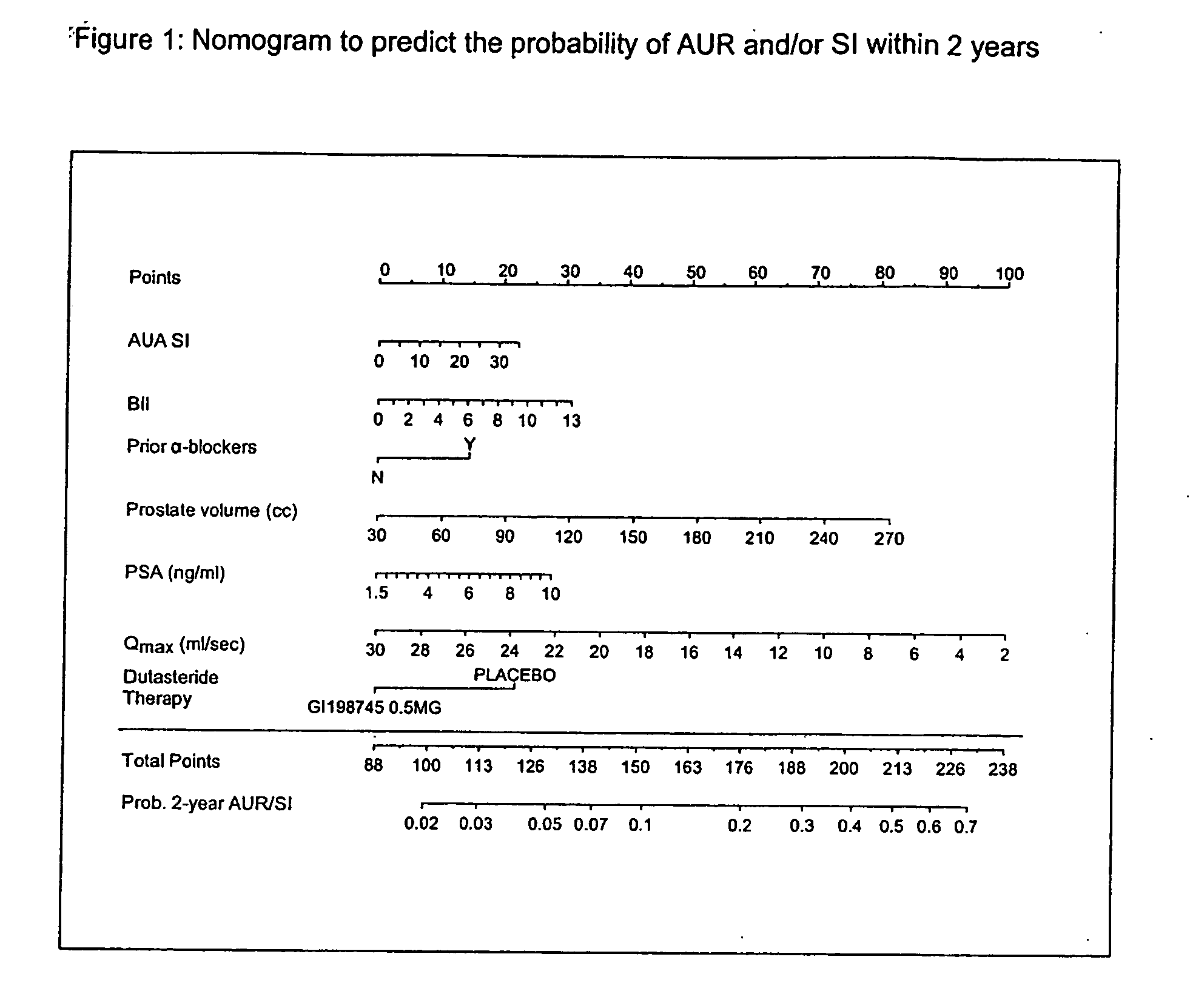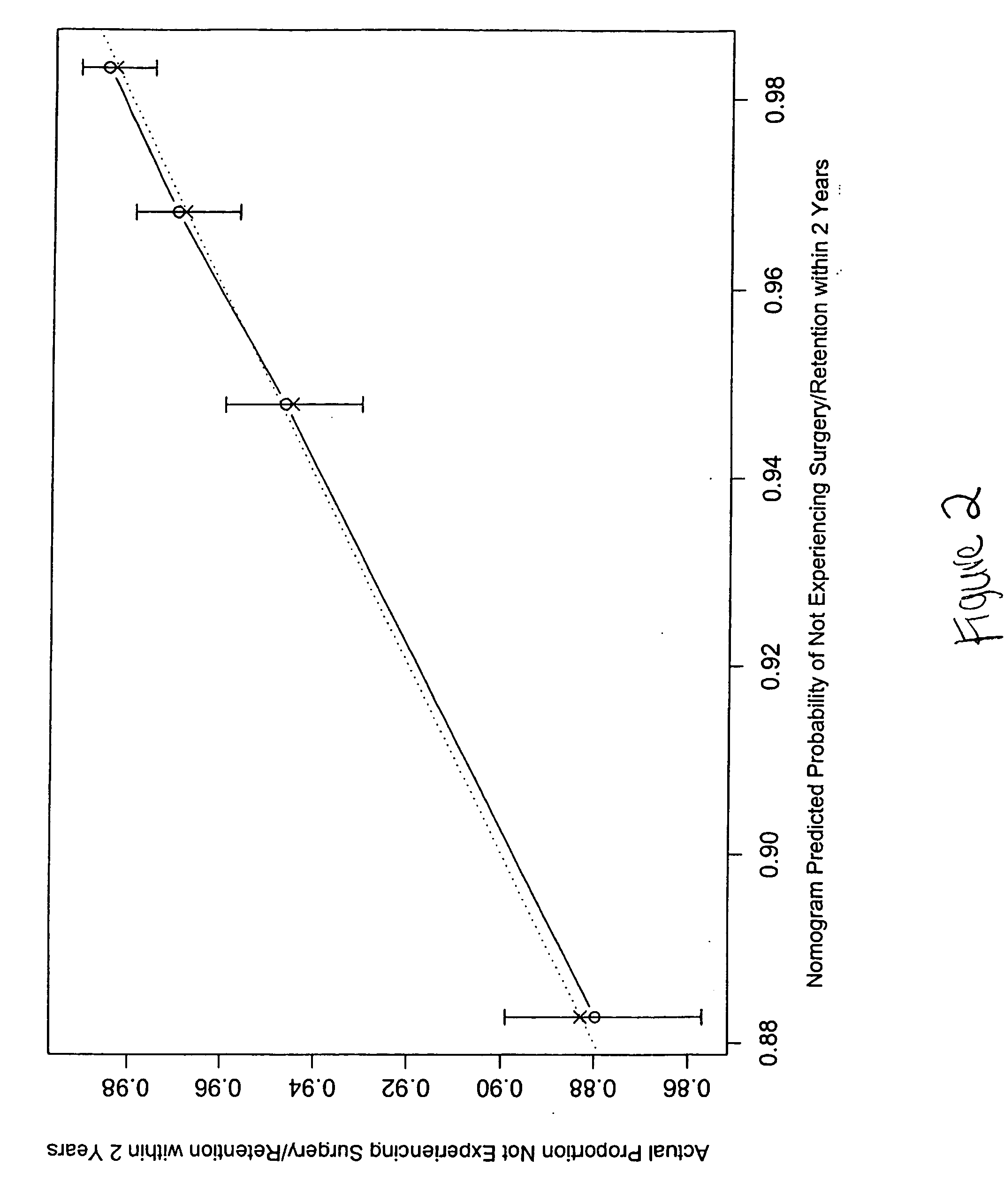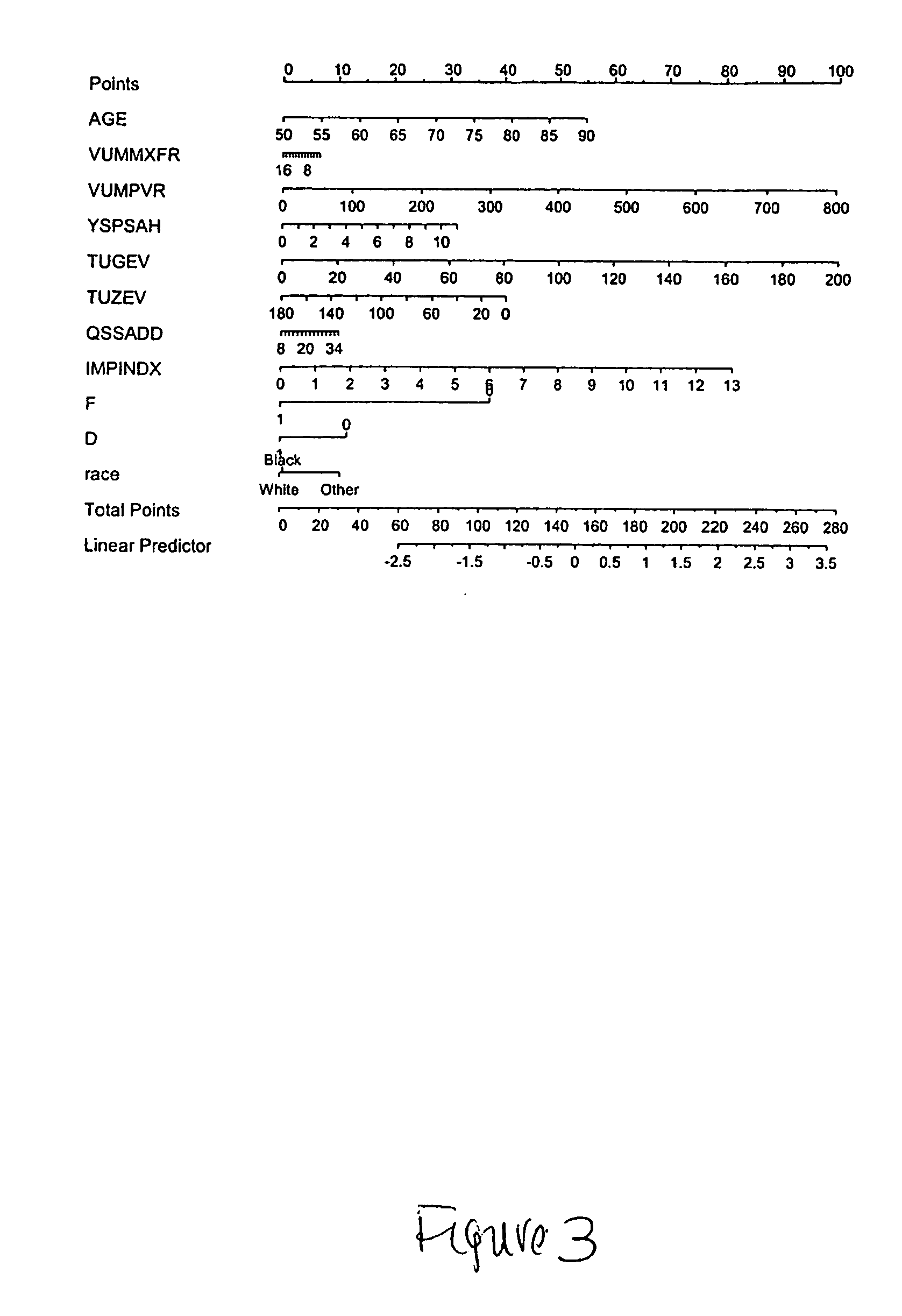Method to predict risk of bph progression
a technology of bph and risk, applied in the field of predicting can solve the problems of increased urination, and increased risk of bph progression in patients, so as to predict the prognosis of a bph patient, predict and provide the risk of bph progression and prostate cancer developmen
- Summary
- Abstract
- Description
- Claims
- Application Information
AI Technical Summary
Benefits of technology
Problems solved by technology
Method used
Image
Examples
example 1
Nomograms to Predict BPH Progression with or without Dutasteride Therapy
[0089] Benign prostatic hyperplasia (BPH) is a chronic and progressive condition associated with a significant risk of acute urinary retention (AUR) and need for surgical intervention (Emberton et al. 2002). A 60 year-old man has a 23% lifetime risk of AUR (Jacobsen et al. 1991)), whilst a man aged ≧60 years with an enlarged prostate and obstructive symptoms has a 39%, 20-year probability of undergoing BPH-related surgery (Arrighi et al. 1991).
[0090] Risk factors for progression to outcomes such as AUR and the need for surgery can be used to identify men at higher risk (Emberton et al. 2002), and can facilitate timely initiation of medical therapy with 5α-reductase inhibitors (5ARIs), which have demonstrable efficacy in reducing the risk of these outcomes (McConnell et al. 1998; Roehrborn et al. 2002). For example, baseline prostate volume (PV) and serum prostate-specific antigen (PSA) levels have been shown t...
example 2
Nomograms to Predict the Risk of BPH Progression Using Data from the MTOPS Trial
[0111] A MTOPS (Medical Therapy of Prostatic Symptoms) based nomogram to predict BPH progression, including symptom progression at three and five years, and AUR (Acute Urinary Retention) / BPH Invasive Therapy Progression at three and five years, was developed from the data obtained from the MTOPS trial with the use of Cox proportional hazards modeling with splines to relax linear assumptions. A similar nomogram was constructed as demonstrated above in Example 1, which identified the following predictors at baseline that were included in the final nomogram: AUA-SI, BII index, prior use of alpha blockers, PSA level, prostate volume, Qmax, randomization group (dutasteride or placebo). As described herein below, the same variables listed in Example 1 at a minimum along with other predictors, e.g., age, PVR, and the like, that were significant predictors of BPH progression on univariable analysis of the MTOPS...
example 3
Development of a BPH Nomogram to Predict BPH Progression that Incorporates BPSA as a Predictor Using Data and Frozen Sera from the Merck-Sponsored Proscar Long-term Efficacy and Safety Study (PLESS)
[0142] In the past, prostate related work focused on the study of the molecular forms of PSA found in prostate tissue harvested at radical prostatectomy from three clinically important, yet different, areas of the prostate: non-cancerous peripheral zone, peripheral zone cancer, and benign transition zone of the prostate (Song et al. 1997; Slawin et al. 1998). Early studies focused on quantifying, using Western Blot analysis, the levels of free PSA, complexed PSA, and ACT present in these areas of the prostate, since it was hypothesized that the forms of PSA found in prostate tissue, which are present in milligram per milliliter quantities, and thus much easier to study, would reflect the character of PSA found in serum at nanogram per milliter quantities. Later, more sophisticated studie...
PUM
| Property | Measurement | Unit |
|---|---|---|
| volumes | aaaaa | aaaaa |
| volume | aaaaa | aaaaa |
| volume | aaaaa | aaaaa |
Abstract
Description
Claims
Application Information
 Login to View More
Login to View More - R&D
- Intellectual Property
- Life Sciences
- Materials
- Tech Scout
- Unparalleled Data Quality
- Higher Quality Content
- 60% Fewer Hallucinations
Browse by: Latest US Patents, China's latest patents, Technical Efficacy Thesaurus, Application Domain, Technology Topic, Popular Technical Reports.
© 2025 PatSnap. All rights reserved.Legal|Privacy policy|Modern Slavery Act Transparency Statement|Sitemap|About US| Contact US: help@patsnap.com



